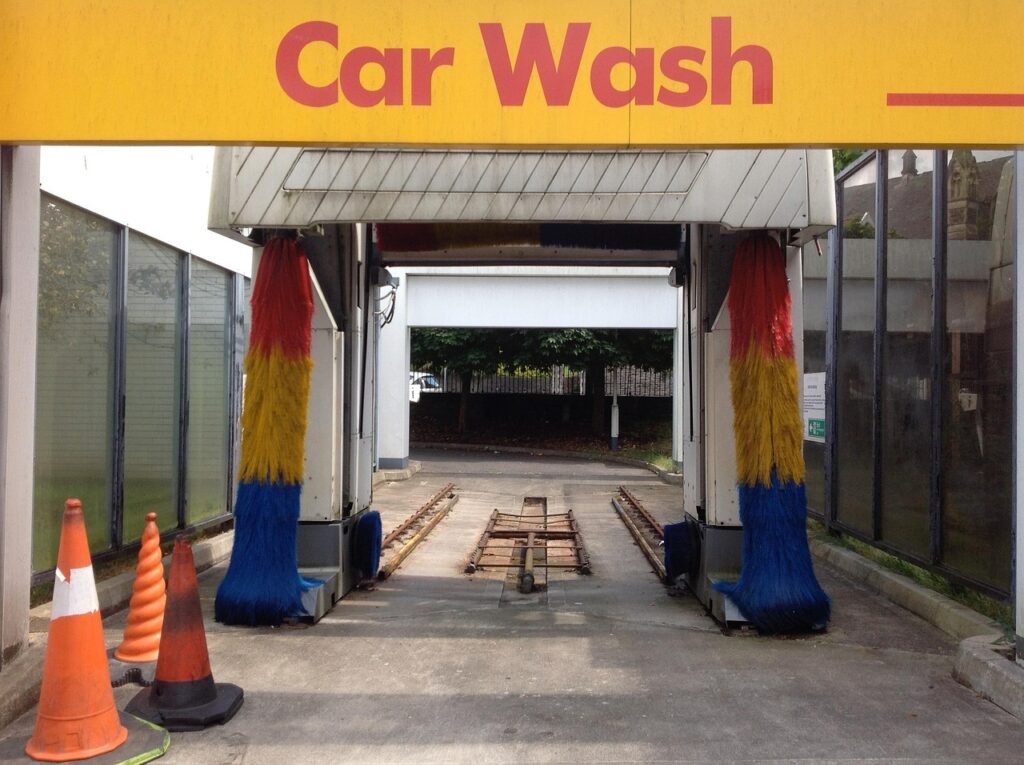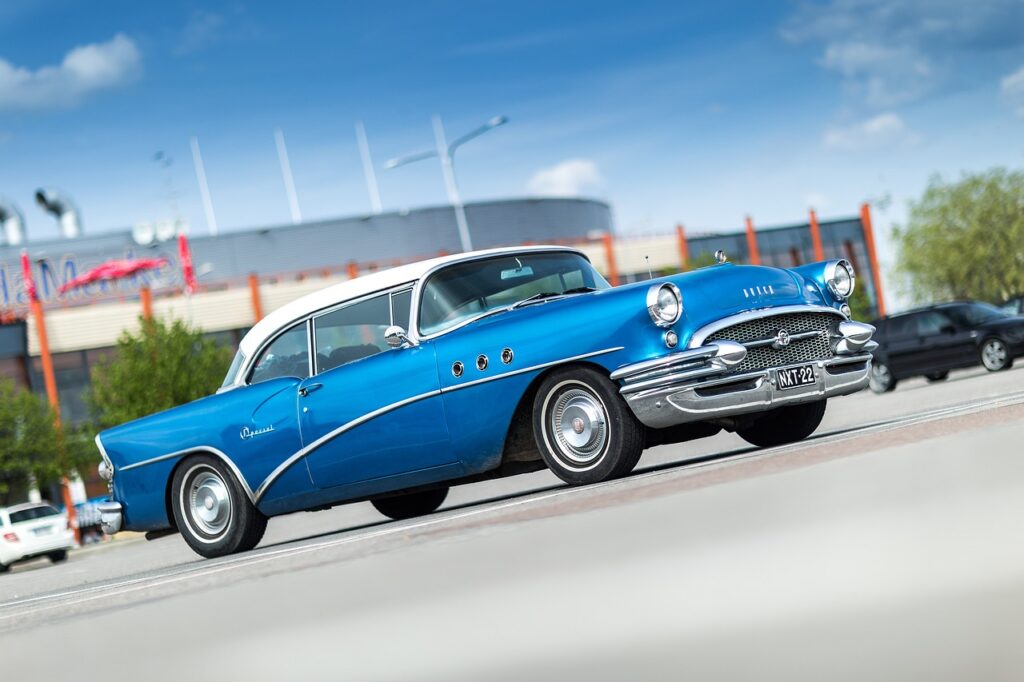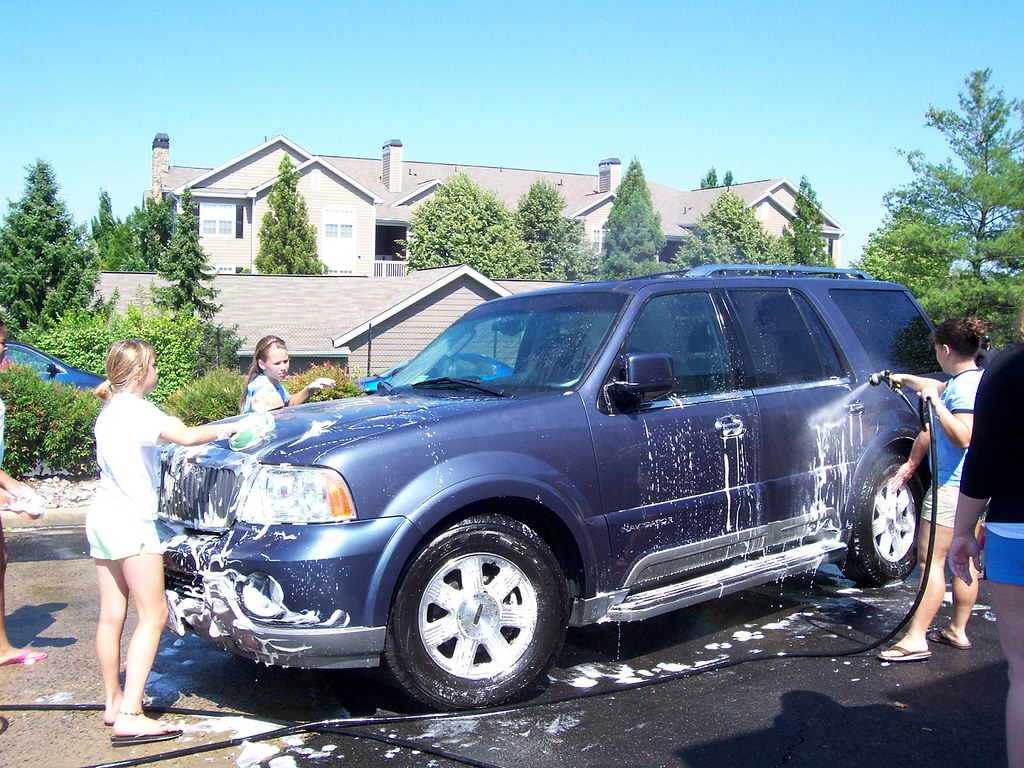
Your car’s paint job is more than just a pretty face; it’s the first line of defense protecting your vehicle’s bodywork from corrosion, harsh sun exposure, and the relentless wear and tear of daily driving. We all want our cars to look their best, gleaming under the sun, but sometimes, our best intentions or simple oversights can lead to costly and frustrating damage to that pristine finish. It’s like a secret saboteur, quietly eating away at your paint, sometimes in under five minutes!
Think about it: from that quick splash of water to what you use to wipe it down, many everyday things can silently destroy that glossy finish you love. We’re talking about those simple mistakes that, when compounded, can transform a vibrant coat into a dull, scratched mess. The good news? You’re about to become a paint-protection pro.
We’re diving deep into the most common pitfalls that unsuspecting car owners fall into, uncovering the truths behind quick fixes and seemingly harmless habits. Get ready to learn how to keep your ride looking showroom-ready, because understanding these simple mistakes is the first step to a flawless finish.
1. **Using Incorrect Cleaning Products (Dish Soap, Harsh Chemicals)**It’s a classic move: you’ve run out of car wash soap, or maybe you just think “soap is soap,” so you grab that bottle of dish soap from under the sink. Stop right there! While dish soap might be a hero in the kitchen, cutting through grease on your plates, it’s an absolute villain for your car’s paint.
These soaps are specifically formulated to strip away oils and grime, which unfortunately includes the protective wax layer on your vehicle. Without this crucial wax, your paint is left and vulnerable, exposed directly to all the environmental elements that cause faster fading and potential scratches. You wouldn’t use sandpaper to clean your face, right? Treat your car’s paint with the same respect.
The danger doesn’t stop at dish soap. Harsh chemicals like bleach or ammonia, often found in common household cleaners (think Clorox wipes, Lysol, Windex), are also detrimental. They can strip away waxes, dull your paint, and even cause discoloration, leaving ugly streaks and a compromised finish. For safe and effective cleaning, always, *always* choose products specifically formulated for automotive use. These are designed to be gentle on your paint while still getting the job done right. And for those stubborn spots, use only automotive-safe degreasers when needed, and always dilute rubbing alcohol 10:1 if you must use it, rinsing thoroughly afterward.
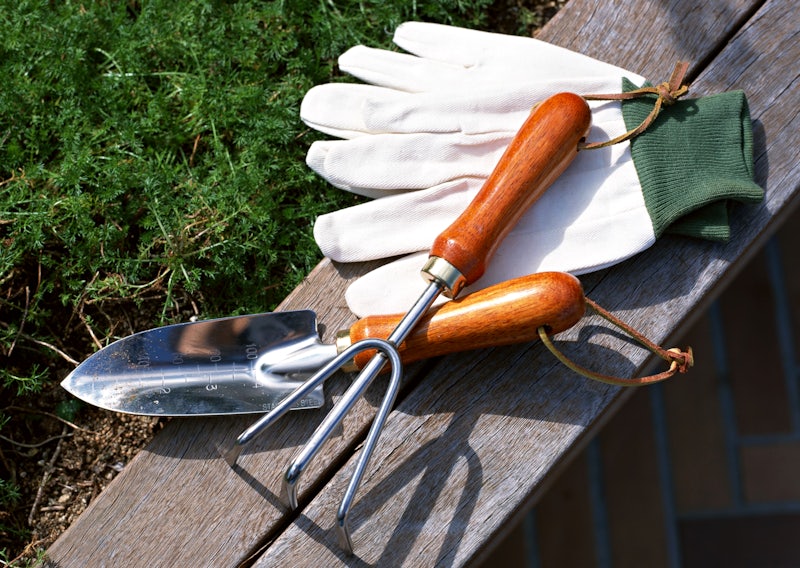
2. **Poor Washing Techniques (Dirty Tools, Single Bucket, Scrubbing)**You wouldn’t scrub your face with a dirty rag, so why would you do it to your car? A dirty sponge, towel, or chamois can carry unseen dangers to your car’s paint. When you reuse a cleaning tool that hasn’t been properly cleaned, it often harbors dirt and debris that can be dragged across the surface of your car as you wash, creating micro-scratches. These tiny scratches accumulate over time, dulling your finish and creating those dreaded swirl marks. Always ensure your sponge or chamois is clean before starting, and rinse it frequently during the wash to minimize the risk.
Another common blunder? Using just one bucket. Many people use a single bucket when washing their car, not realizing the potential harm. When you use one bucket, dirt from the car is transferred into the soapy water, which can then be reapplied to the car’s surface with every pass of your sponge. This dramatically increases the likelihood of scratches and swirl marks, effectively washing dirt *into* your paint instead of off of it.
The solution is simple and incredibly effective: implement a two-bucket system. One bucket is for your soapy water, and the other is for rinsing your wash mitt or sponge. This helps keep your wash water cleaner and significantly reduces the chances of scratching your paint. Additionally, avoid using old, stiff brushes. As brushes age, their bristles can become hard and abrasive, making them a recipe for disaster on your car’s delicate finish. Always opt for soft, automotive-grade brushes and replace them regularly. Remember, what ruins car paint faster than anything else is scrubbing with rough cloths or using the wrong soaps.

3. **Washing in Direct Sunlight**Picture this: it’s a beautiful, sunny day, perfect for washing your car outdoors. You might think it’s convenient to get the job done under the warm sun, but this seemingly innocent choice can cause serious issues for your car’s paint. The heat from the sun causes water and soap to dry incredibly quickly on the surface of your vehicle.
When water and soap dry too fast, they leave behind stubborn water spots and unsightly streaks. These spots aren’t just an aesthetic annoyance; if not addressed promptly, the minerals in hard tap water can etch into your paint and become permanent. These “chalky spots” literally bake into your clear coat, leaving behind ghostly outlines that are incredibly difficult, if not impossible, to remove without professional help.
To prevent this frustrating and damaging scenario, make it a golden rule to wash your car in the shade or during the cooler parts of the day, such as early morning or late afternoon. This gives you ample time to work, rinse thoroughly, and dry your car completely before any water or soap has a chance to bake onto the paint. Always dry your car with a high-absorbency towel to prevent any mineral deposits from settling.
Read more about: The 12 Everyday Staples That Defy Your Fridge’s Freshness Promises
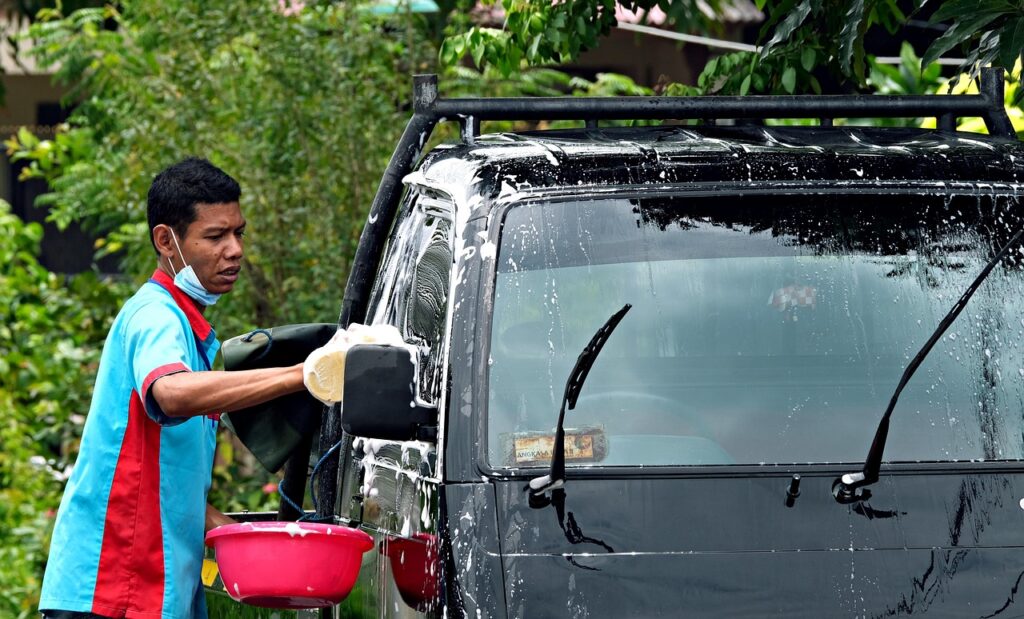
4. **Skipping Essential Washing Steps (Pre-Rinse, Final Rinse)**You’re eager to get your car clean, so you jump straight to applying soap, right? Skipping the pre-rinse step is a common mistake that can lead to significant paint damage, and it’s one of the easiest to fix. A thorough pre-rinse serves a crucial purpose: it removes loose dirt, dust, and debris from the surface of your car. If these particles are left on the surface, they’ll be dragged across your car when you start scrubbing with your wash mitt, acting like tiny pieces of sandpaper. This friction inevitably results in scratches that dull your paint’s shine and create swirl marks. To avoid this, always give your car a thorough rinse with clean water before applying any soap.
Equally important, but often overlooked, is the final rinse. After all that scrubbing and sudsing, it’s tempting to call it a day once the visible dirt is gone. However, skipping the final rinse can leave behind soap residue that dulls the paint. Even if the car *looks* clean, leftover soap can dry and form streaks or water spots, which significantly detract from your car’s appearance. These residues can also attract more dirt, making your next wash even harder.
A thorough final rinse with clean, low-pressure water ensures that all soap is completely removed, leaving a spotless, shiny finish. Think of it as hitting the reset button, preparing your car for the next step of drying and protection. Don’t cut corners on these fundamental steps; they are the foundation of a scratch-free, gleaming finish.
5. **Frequent Automatic Car Washes**The convenience of an automatic car wash is undeniable. You drive in, sit back, and in a few minutes, your car emerges seemingly clean. But here’s a hard truth: frequent visits to automatic car washes can gradually wear down your car’s paint over time. It’s a classic example of convenience often coming at a hidden cost for your vehicle’s long-term aesthetics.
The brushes and cloths used in these car washes are often not cleaned properly between vehicles. This means they can collect dirt, grit, and debris from dozens, if not hundreds, of other cars before yours. As these dirty, abrasive brushes scrub your car’s surface, they effectively scrape all that accumulated grime across your paint. The result? A dull, scratched finish riddled with swirl marks that become more prominent with each visit. It’s a death by a thousand tiny scratches, slowly but surely deteriorating your clear coat.
Over time, this cumulative damage will necessitate professional polishing or paint correction to restore your car’s shine, a far more expensive and time-consuming fix than simply avoiding the automated wash. While they might be okay for a quick rinse in a pinch, hand washing, although more time-consuming and labor-intensive, remains a much safer and superior option for protecting your paint’s integrity and maintaining its pristine condition. If you value your car’s finish, consider automatic washes an occasional emergency measure, not a regular routine.
Read more about: Elevate Your Attention: 13 Simple Mindfulness Practices to Enhance Focus and Well-being by 20%
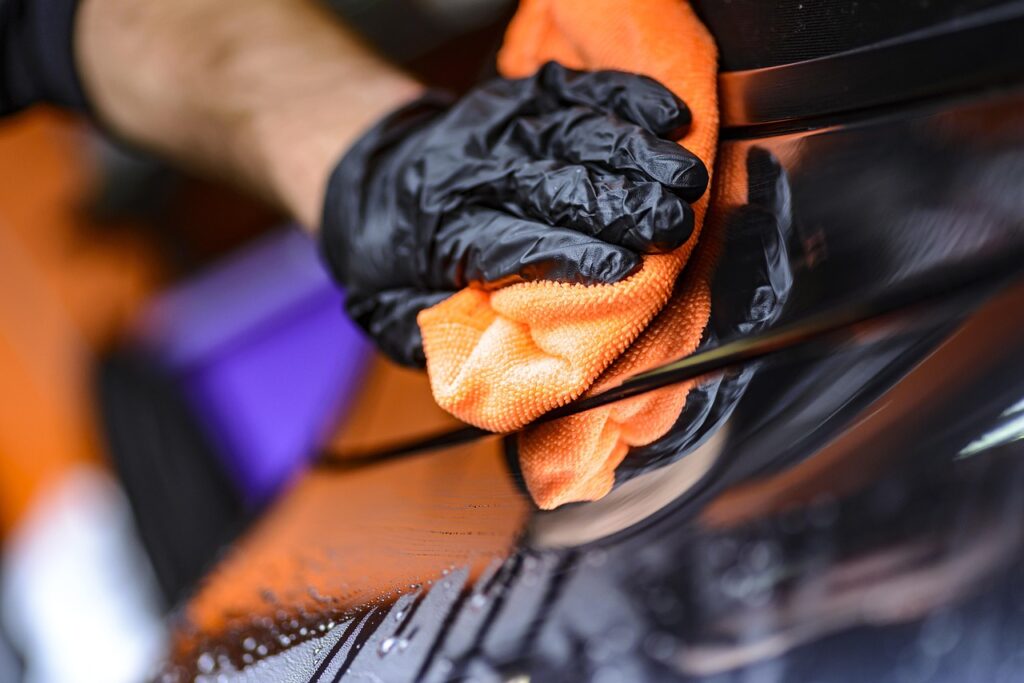
6. **Incorrect Pressure Washer Use**A pressure washer can be an incredibly efficient tool for cleaning your car, making quick work of rinsing off dirt and grime. It can also be your paint’s worst nightmare if used incorrectly. While it speeds up the cleaning process, high-pressure water wielded without care can lead to serious and immediate damage to your car’s delicate finish. It’s a powerful tool that demands respect and a proper technique.
One of the primary risks is that high-pressure water can strip away protective wax layers, leaving your paint vulnerable to the elements. Even worse, if the nozzle is held too close to the paint, or if the pressure setting is too high, it can chip the paint clean off, exposing the underlying metal. This is especially true for areas where the paint might already be compromised or on older vehicles. Imagine blasting away a layer of protection with a single, misguided sweep!
To avoid this costly mistake, always keep the pressure washer at a safe distance from your car’s surface—a minimum of two feet is a good rule of thumb. Furthermore, always use a wide-angle nozzle (like a 40-degree white tip or similar fan spray) and a gentle spray pattern, especially on sensitive areas. This approach ensures effective cleaning by dislodging dirt without risking your paint’s integrity. Treat your pressure washer as a powerful ally, not a weapon against your car’s beautiful finish.
Your car’s exterior faces a gauntlet of threats beyond just how you wash it. We’re talking about those sneaky, silent saboteurs that can eat away at your paint job when you least expect it, or when you simply overlook them. From nature’s little surprises to invisible environmental attacks, these are the hidden dangers that can leave your ride looking less than stellar.
Read more about: The 11 Safest Car Seats of 2025: An In-Depth Guide for Parents on Crash Protection and Ease of Use
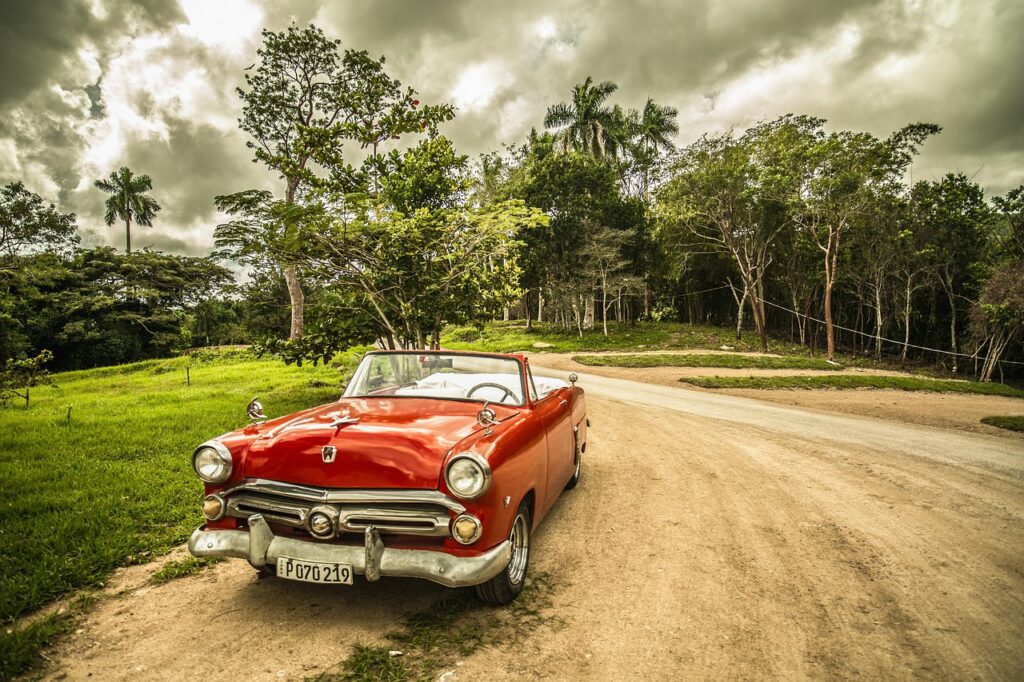
7. **Ignoring Organic Contaminants (Bird Droppings, Tree Sap, Bug Splatters)**Nature is beautiful, but it can be a real pain for your car’s paint! We’re talking about those seemingly harmless splatters and sticky spots that, if left unattended, can wreak absolute havoc on your clear coat. It’s a classic mistake to think they’ll just wash off later, but these organic invaders are far more aggressive than you imagine. They’re like tiny, highly acidic time bombs waiting to etch their mark onto your pristine finish.
Take bird droppings, for instance. They’re not just gross; they’re acidic and packed with enzymes that can literally eat into your car’s clear coat in a matter of hours. And here’s a fun fact: birds often consume seeds, nuts, and even small gravel, which can scratch your car’s surface on impact even before the acid starts to work its magic. Always, *always* remove them quickly with a soft cloth and a safe, pH-neutral cleaner. Products like a dedicated insect and bird dropping remover are your best friend here.
Then there’s tree sap, that sticky stuff that bonds to your paint and refuses to let go. It’s not only incredibly stubborn but also acidic, leading to staining or etching if it hardens on the surface. Don’t even think about scraping it off, as that will just cause more damage. Instead, use warm water and a microfiber cloth for gentle removal, or grab a specialized product like a tar, sap, and glue remover to safely cut through the stickiness.
And let’s not forget bug splatters. Those unfortunate encounters with insects on the highway leave behind more than just a mess. Dead bugs contain proteins and acids that cling tightly to your paint and actively work to break down the clear coat over time. Regular washing with a good car shampoo can help remove them before permanent damage sets in, but for baked-on splatters, those specific bug removers are truly a godsend. Don’t let these natural aggressors win the battle against your paint!

8. **Neglecting the Undercarriage**Okay, so your car’s belly isn’t usually the first thing you think about when you’re admiring its gleaming paint, right? But overlooking the undercarriage is one of those sneaky, simple mistakes that can lead to some seriously costly damage down the line. It’s a classic case of “out of sight, out of mind” that your car’s long-term health secretly pays for.
The undercarriage is a magnet for all sorts of nasty stuff that gets flung up from the road. We’re talking about dirt, grime, and especially during those winter months, corrosive road salt. This accumulation isn’t just unsightly; it actively contributes to rust and corrosion on your car’s vital components and structural elements. And guess what? Rust isn’t polite; it doesn’t stay confined to the dark corners of your car.
Over time, this unchecked corrosion can spread, slowly but surely affecting the visible parts of your car, compromising the integrity of its bodywork, and ultimately ruining your paint job from the inside out. It’s a silent deterioration that chips away at your vehicle’s value and appearance. You might see bubbles or cracks in your paint and wonder where they came from – often, the culprit is hidden underneath.
The solution is wonderfully simple and super effective: regularly rinse your undercarriage! This is especially important after driving on salted roads or through muddy conditions. A quick spray with a hose or a visit to a car wash with an undercarriage wash option can make all the difference, flushing away those corrosive elements before they have a chance to settle in and cause irreversible damage. Your car will thank you for this often-neglected act of care.
Read more about: Shield Your Ride: Simple, Effective Ways to Banish Rust from Your Truck’s Undercarriage This Winter and Beyond

9. **Leaving Corrosive Chemical Spills Unattended (Gasoline, Brake Fluid)**Picture this: you’re at the gas station, a little distracted, and a few drops of fuel trickle down your car’s side. Or maybe you’re doing some DIY maintenance, and a bit of brake fluid makes an escape. “No biggie,” you might think, “I’ll clean it later.” Hold up! That “later” could be the exact moment your paint job starts to vanish. Ignoring these corrosive chemical spills is a monumental mistake that can ruin your finish in minutes.
Gasoline, for example, isn’t just fuel for your engine; it’s also a powerful solvent. When it drips onto your paint, it immediately starts to dull the finish and can leave behind ugly, permanent marks. It’s like a tiny, aggressive attack on your clear coat, and the longer it sits, the more damage it can inflict. The golden rule here is swift action: clean any spills quickly with water and car shampoo, don’t just let it evaporate.
Even more aggressive is brake fluid. This stuff, especially older formulas like DOT 2 or DOT 3, is highly corrosive and can literally strip paint within minutes of contact. It’s a serious threat that demands immediate attention. While newer car paints are thankfully a bit more resistant, it’s still never, ever a good idea to test that theory. If you spill it, rinse the area immediately and thoroughly wash it with appropriate automotive cleaners.
The bottom line for any fluid spill – be it petrol, diesel, oil, or brake fluid – is to address it without delay. These liquids are designed to do specific jobs, and none of those jobs involve preserving your car’s paint. Leaving them unattended allows them to etch, dull, and deteriorate your paintwork, transforming a quick clean-up into a costly repair. Be vigilant, and clean those spills like your paint job depends on it, because it absolutely does.

10. **Prolonged Exposure to Sunlight and UV Rays Without Protection**Ah, the sun! It makes everything bright and shiny, right? Well, yes, but it’s also one of your car’s most formidable long-term enemies, silently assaulting your paint job every single day. Prolonged exposure to sunlight and its relentless UV rays without proper protection is a common and often underestimated mistake that leads to a dull, faded, and prematurely aged finish. It’s like leaving your skin out in the sun without SPF – eventually, the damage shows.
UV radiation is incredibly potent, and it works to break down the chemical bonds in your car’s clear coat and paint layers. This process is called oxidation, and it’s what causes your vibrant paint to gradually lose its richness, fade, and take on a chalky appearance. That deep, glossy shine you once loved slowly gives way to a dull, lifeless finish. Imagine your car’s paint as a delicate fabric slowly bleaching under the sun’s glare – that’s essentially what’s happening over time.
This isn’t just an aesthetic annoyance; it’s a structural weakening of your paintwork. The clear coat, which is the transparent protective layer on top of your color, is the first line of defense. When UV rays compromise it, your underlying color coat becomes vulnerable, accelerating fading and increasing the risk of other types of damage. Those seemingly innocent sunny days are slowly but surely deteriorating your vehicle’s finish, one ray at a time.
But don’t despair! You can absolutely fight back against the sun’s harsh effects. The smart move is proactive protection. Applying a high-quality wax, sealant, or, even better, a ceramic coating with UV blockers can dramatically slow down this oxidation process. These protective layers act like a shield, absorbing the UV punishment so your paint doesn’t have to. So, give your car the sun protection it deserves, and keep that showroom shine going strong for years to come.
Read more about: 14 Essential Strategies: Guarding Your Car’s Finish Against Summer’s Extreme Heat and Harmful UV Rays

11. **Failing to Protect Against Road Salt and Acid Rain**Some paint threats come from the ground up, and others from the sky down! We’re talking about those pervasive environmental aggressors like road salt and acid rain. While you can’t control the weather or what gets put on the roads in winter, failing to protect your car from these elements is a mistake that allows them to silently and relentlessly chew away at your finish. It’s a constant battle, and your car needs an armor-up plan.
Road salt is an absolute necessity for winter safety, but it’s pure kryptonite for your car’s paint and metal. It’s highly corrosive and, once it gets a foothold, it can work its way under your paint, accelerating rust formation at an alarming rate. Imagine tiny, invisible acid attacks happening beneath your shiny exterior. This isn’t just about surface rust; it’s about structural damage that compromises your vehicle’s longevity and appearance, especially if you live in a region with heavy snowfall and road salting.
Then there’s acid rain, a less visible but equally destructive force. Pollution in our atmosphere can turn rainwater into a mild acid, and when it lands on your car, it slowly eats into the clear coat. You might not see it immediately, but over time, acid rain can cause chemical etching, leaving behind visible outlines or pitting in the surface of your paint. It’s like a thousand tiny invisible bites out of your car’s protective layer, dulling its shine and leaving it vulnerable.
The defense strategy against these environmental assaults involves a few key habits. Regular rinsing is crucial, especially after rainstorms or driving on salted roads, to wash away corrosive residues. Even better, consider applying a ceramic coating. These coatings create a hydrophobic barrier that repels water, salt, and other contaminants, preventing them from bonding to your paint. Storing your car under cover whenever possible also gives it a break from constant exposure, adding an extra layer of protection against these sneaky attackers.
Read more about: Why The Internet Is Divided: Unpacking The True Meaning of Controversy In Our World
12. **Skipping Regular Waxing or Protective Coatings**After all this talk about mistakes that can ruin your car’s paint, let’s wrap things up with one of the biggest, yet simplest, oversights: skipping regular waxing or neglecting to apply a protective coating. This isn’t just about aesthetics; it’s about providing your paint with the essential armor it needs to withstand all the environmental hazards we’ve discussed. It’s the ultimate protective measure, and forgetting it is like sending your car into battle unarmed.
Think of wax, sealants, or ceramic coatings as an invisible shield for your car’s exterior. They create a crucial barrier between your delicate paint and everything Mother Nature (and careless humans) throws at it. This includes the sun’s harmful UV rays, those aggressive bird droppings, sticky tree sap, pesky bug splatters, corrosive road grime, and even hard water spots. Without this protective layer, your paint is left and much more vulnerable to damage and rapid fading.
The consequence of this omission is clear: your car’s paint will deteriorate faster. You’ll see premature oxidation, dullness, and a significant reduction in that coveted gloss. Not only does this detract from your car’s appearance, but it also means you’ll have to deal with more stubborn contaminants sticking directly to your paint, making cleaning harder and increasing the risk of scratching during washes. It’s a snowball effect that nobody wants for their ride.
But here’s the good news: regular application of these protective layers offers massive benefits. Waxing not only enhances your car’s appearance with a deep, reflective shine but also extends the life of your paint job by shielding it from the elements. And if you want next-level protection, ceramic coatings provide an incredibly durable, long-lasting hydrophobic barrier that makes cleaning a breeze and offers superior defense against etching and fading.
Making a protective coating a regular part of your car care routine is a game-changer. Whether you opt for waxing every few months or apply a ceramic spray every 1-3 months, this step is non-negotiable for a truly flawless finish. It’s a small investment of time and effort that pays huge dividends in maintaining your car’s beauty and preserving its value. Don’t skip this crucial step – it’s the ultimate safeguard against those paint-ruining mistakes.
Read more about: 15 Car Wash Practices and Pitfalls That Secretly Damage Your Vehicle’s Paint Finish
So there you have it, folks! From the quick blunders in the wash bay to the sneaky, long-term assaults from nature and chemicals, your car’s paint faces a lot. But the fantastic news is that with a little awareness and a few simple, smart habits, you can easily avoid these common mistakes. Keeping your ride gleaming doesn’t require a professional detailer every week; it just takes understanding these pitfalls and being proactive. Go forth, protect that paint, and keep your car looking showroom-ready every single day!

